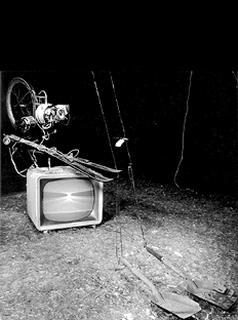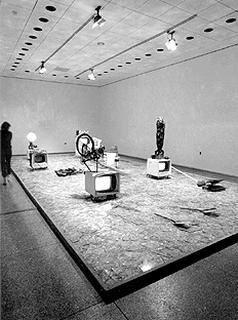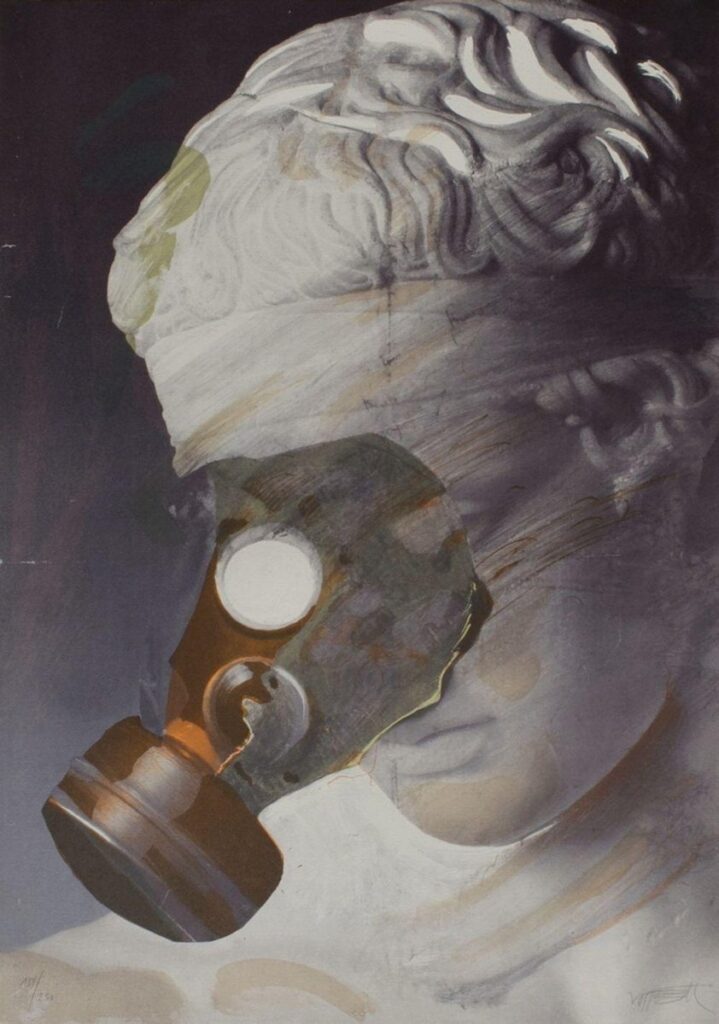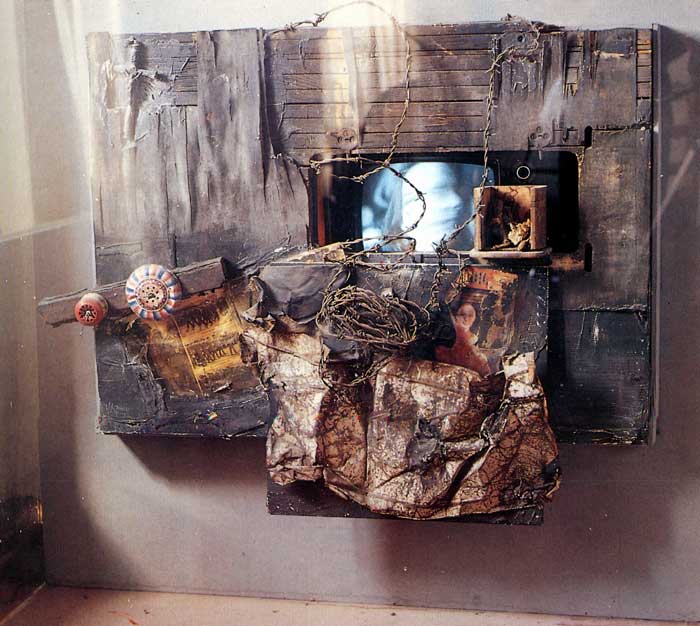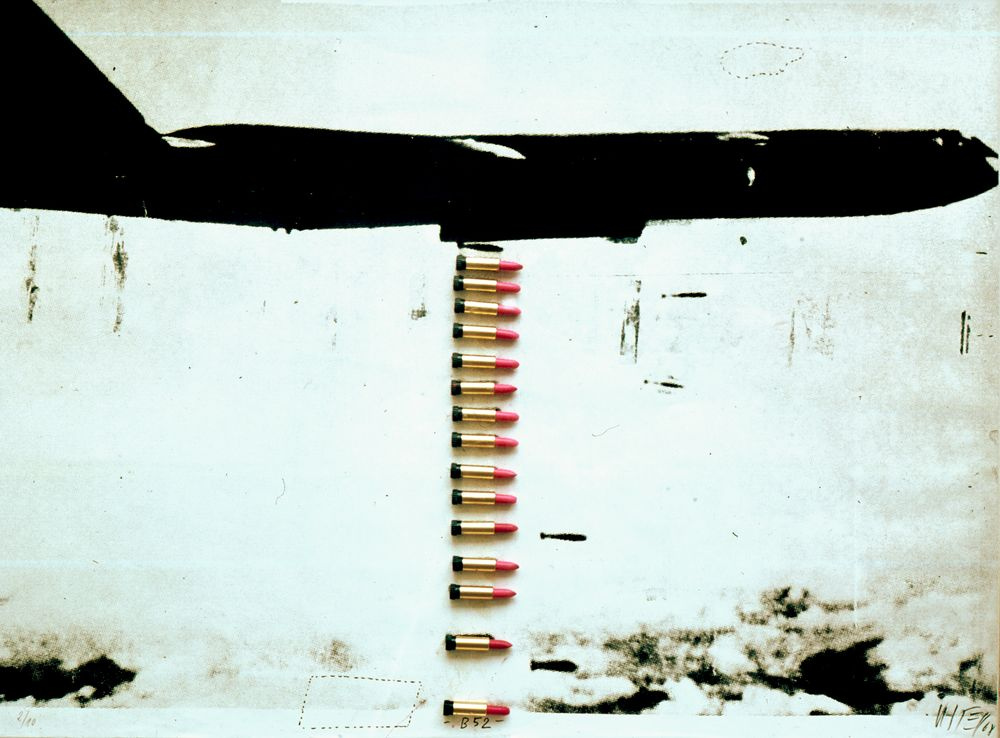Wolf Vostell
The pioneer of Video Art.
Wolf Vostell was a interdisciplinary German artist. He was painter, sculptor and a pioneer of multimedia art, his work was influential on what we consider today as: video art, video installation and installations, as well as a reference figure within the Fluxus movement.
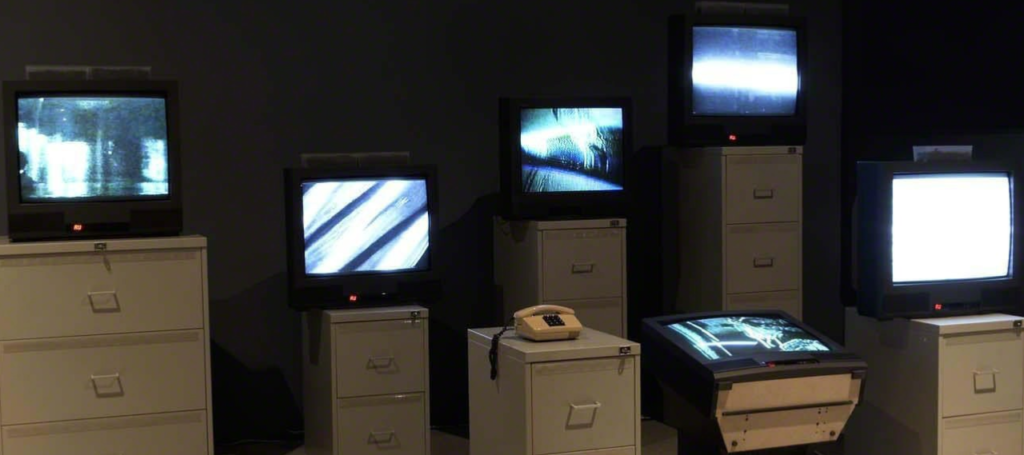
A co-founder of the 1960s Fluxus movement and early adopter of video art alongside Nam June Paik, Wolf Vostell is regarded as the first artist to incorporate a television set into a work of art with his 1958 piece Transmigration, which combined a slashed canvas with a flickering TV screen. He was a pioneer of conceptual art and a leading German proponent of Happenings and Dé-coll/age—an expansion of collage that included events, installations, images, and destructive processes meant to tear down outworn customs and values.
According to Vostell, the room contains ‘Multi multilayer mixed layers, superimpositions and events mobile collages and dé-coll/ages.
For Exemple in “Electronic Dé-coll/age, Happening Room” , instalaltions art show (1968) Venice Biennale. The environment is made up of 6 TV sets equipped with auxiliary electromotors that move objects over the glass-strewn floor. Slides showing earlier happenings and works by Vostell are sometimes projected on the walls. This, like many works of the time, contributed to the development of Multimedia Art.
Much of Vostell’s work incorporates two of the most salient symbols of postwar consumer culture: the television and the automobile. He is also known for embedding objects in concrete, as in his 1970 work Concrete Traffic, a durational sculpture in which he encased a 1957 Cadillac DeVille in the material.

These works were part of a nascent critical language towards consumer society, works like these have significantly influenced the imagination of contemporary artists such as Maurizio Cattelan or Banksy, (for example) obviously this mood of creating art owes a lot to the artistic movement DADA, created by Duchamp in 1919, Duchamp coined new languages of philosophical thought, eradicating the meanings of what we observe, and conceive as art, this approach has significantly influenced the meaning of work and reproducibility, appropriation and copyright.
it is incredible to discover how much contemporary culture has been influenced by capitalism and how much electronic art is actually the immaterial creation of concepts belonging to the multidisciplinary of diversified artistic currents, which, with the passage of time, have used increasingly contemporary tools to express themselves, breaking down the barriers of gender and customs, interdisciplinary artistic currents like Fluxus were fundamental for the genesis of what we call Network and Internet today.
The idea of electronic art and what we consider today as digital art sees its debut from concepts that in reality did not belong to the world of the immaterial nor to the concept of electronic, the use of new electronic media has given rise to the creation of a philosophy increasingly connected to the change and fusion of genres and techniques, the idea that today a smartphone is enough to connect to the world, communicate, share audiovisual content is the synthesis of the globalization thought explored by Fluxus, yet even if Fluxus as an artistic current was critical of society, its philosophical product in internet has lost any type of initiatory value, the criticism of society through an interdisciplinary and multimedia sharing medium, connected to the world has been cannibalized by society itself, becoming part of the foundations of thought globalization capitalist, which artistic currents such as Fluxus criticized.


